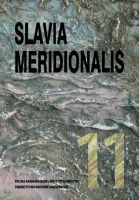Serbska cerkiew w sułtanacie, meczet w Serbii. Przestrzenie sakralne jako miejsca kłopotliwe
Serbian Orthodox Church under the rule of the sultanate, mosques in Serbia. Sacral spaces as troublesome locations
Author(s): Marta Chaszczewicz-RydelSubject(s): Cultural Essay, Political Essay, Societal Essay
Published by: Instytut Slawistyki Polskiej Akademii Nauk
Keywords: Serb Orthodox Church; caliphate; mosques in Serbia; Niš; sacral space
Summary/Abstract: The territorial overlapping of the Ottoman Empire and the reaches of the Orthodox Church resulted in the emergence of new, complex phenomena and forms that managed to survive till the present times to a varying extent and by different means. These forms have become a part of the problematic and “difficult” tradition. Mosques and orthodox churches from the Ottoman times can be found among them. The subsequent reigns realised the symbolic impact of these temples on the area of religion, politics and culture. In the Ottoman times, the possibility of construction of new sacral buildings was determined by the then-current relations between the Serbian patriarchy and the caliphate. The fate of these buildings depended on the political situation, dominating imperial projects, cultural politics of the Serbian state and the local religious structure. The connections between temples and the dynamics of the political history of the Balkans is substantial: the temples were torn down and redesigned, the shape and location of orthodox churches relied on decisions by the Ottoman administration and the rules of oriental urbanism. However the mosques bear traces of inspiration with the Byzantine culture. Observing the development of sacral architecture in Niš – at the background of the political and social relations of the Ottoman empire, one is led to believe that orders rooted in external civilisations – the Islamic religion and the Orthodox Church, retained their individuality but at the same time continued to influence each other which is apparent in the wandering architectural patterns.
Journal: Slavia Meridionalis
- Issue Year: 2011
- Issue No: 11
- Page Range: 281-301
- Page Count: 21
- Language: Polish

